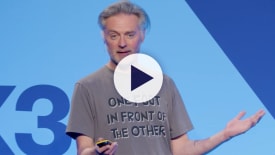This talk introduces hypothesis-driven development as a method for validating architectural choices. We’ll explore how to design experiments that provide actionable data, allowing teams to make informed decisions and adapt to changing requirements.
As a Staff+ engineer, you’re expected to lead complex, cross-functional initiatives, align teams around technical direction, and deliver meaningful outcomes – all in the face of ambiguity and rapid change. Yet the most important architectural decisions often happen early in a project – precisely when knowledge is limited and uncertainty is highest.
To lead effectively in this environment, you need a mindset shift: embrace the role of a lean architect and treat architecture as a series of testable hypotheses. Validate decisions early – while changes are still inexpensive and easy to make. Start small. Build steel threads: thin, end-to-end slices that deliver value and surface insight. Use them to ask sharper questions:
- Will this pattern scale in production?
- Are our boundaries enabling speed or creating new bottlenecks?
- What is real-world usage telling us about our assumptions?
By experimenting your way to better decisions, you create space for smarter choices and generate the feedback needed to shape architecture. As successful patterns emerge, your team can invest with confidence – steadily building scalable, resilient systems one iteration at a time.





